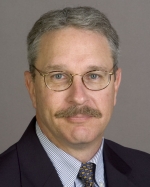Personal Income in Missouri Continues to Lag
Recent economic data reinforces an old story: Missouri’s economy is not expanding fast enough to substantially raise its citizens’ income.
The Bureau of Economic Analysis (BEA) data on personal income across states and metropolitan areas (http://www.bea.gov/newsreleases/regional/rpp/2016/_images/rpp0716.png ) shows that real per-capita personal income for the state of Missouri—personal income adjusted for inflation and measured on a per-person basis—increased at a rate of 2.1 percent in 2014. That puts Missouri squarely in the middle of the pack, with the 26th-fastest growth among states. Several neighboring states fared worse: Iowa, Illinois, Kansas, and Nebraska all registered slower growth rates.
Because the state is a mixture of rural and urban areas, it’s worth asking if this middling record is reflective of all areas in the state? To answer this question, we use BEA data for metropolitan areas in the country to see how real per-capita personal income grew in Missouri’s metropolitan areas.
The table below lists the name of the metropolitan area (metropolitan statistical area, or MSA as defined by the BEA), each MSA’s growth in real per-capita personal income and the MSA’s national ranking based on that growth rate. For some perspective, the average growth rate in real per-capita personal income across the 381 MSAs nationwide was 2.04 percent in 2014. The Hanford-Corcoran, California, MSA had the highest growth rate at 7.5 percent; the Danville, Illinois, MSA the lowest growth rate at -3.1 percent.
From the table we see that real per-capita personal income growth in Missouri’s MSAs lags behind most of the nation’s other metro areas. Only Springfield and St. Louis are at or above the national average, though Cape Girardeau and Kansas City are close to the average. Columbia basically saw personal income in 2014 remain at its 2013 level.
The upshot is that the majority of the MSAs in the country had better personal income growth in 2014 than Missouri’s metro areas. It might not be wise to look to urban growth to raise the state’s average.
| Metropolitan Statistical Area (MSA) | Growth Rate (%) | Rank |
| Springfield, MO | 2.7 | 100 |
| Saint Louis, MO-IL | 2.0 | 210 |
| Cape Girardeau, MO-IL | 1.9 | 213 |
| Kansas City, MO-KS | 1.8 | 231 |
| Jefferson City, MO | 1.6 | 261 |
| Saint Joseph, MO | 1.4 | 291 |
| Joplin, MO | 1.0 | 327 |
| Columbia, MO | 0.1 | 365 |
(Source: Bureau of Economic Analysis)


